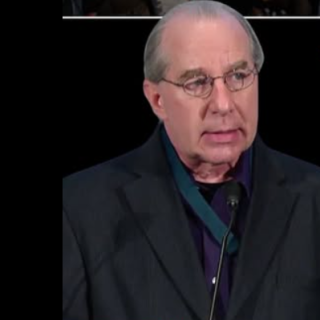Let’s spare a recital of COVID-19 (coronavirus) pandemic’s facts and figures. Simply put, they are sickening, staggering, scary, unprecedented, unfathomable, unimaginable, hellish, horrific, historic. The human suffering combined with the collapsing economy finds one of the greatest countries on earth quaking under enormous challenges, the most pressing of which may be hunger.
The virus has frayed the fragile fabric that holds America together. Loss of employment leads to lost income, leaving little left over for even basics like shelter and food. It reveals a tattered and torn safety net that subjects the vulnerable not only to the illness, but also to the scourges of homelessness and hunger.
As evidence, the most recent four weeks of new jobless claims (around 855,000) doubled those for the last two years – combined. Even before the virus hit, the incomes of three in ten Ohioans qualified for food assistance. Then onslaught of Covid-19 caused the number served by foodbanks to quadruple; 75% of them new clients.
Even dark times, some businesses remain operational. On March 23rd, Ohio Governor Mike DeWine issued a “stay at home order” for “all persons … unless engaged in essential work.” Defined as “services that are vital to the health and welfare of a population … even in a disaster,” essential essentially means open. Listed on page 5 of the governor’s order are “licensed medical marijuana use, medical marijuana dispensaries and licensed medical marijuana cultivation centers.” Yes, in just one day, cannabis exited illicit and entered essential.
That means business as semi-usual for Ohio’s nascent cannabis industry. Employees remain on the job, purchases persist, and owners have income.
Unlike most therapeutic substances, cannabis was born not in a chemistry lab, but rather, by mother nature and decades of passionate advocacy. Further, the existentially profound endocannabinoid system, common to all mankind, gives credence to the importance of giving back and paying forward.
But how? Here are two ways in which cannabis can intersect, address and ameliorate hunger.
First, foodbanks. Dr. Bridget Williams, an MD who holds a certificate to recommend under Ohio’s medical marijuana program, started Cannabis Can last December. Green bins, placed at 24 locations around Ohio, collected a half-ton of donated food that was subsequently distributed to three Ohio foodbanks. The advent of Covid-19 motivated a retooling of the program as a virtual food drive that could better boost social distancing. Plus, foodbanks can accomplish more with monetary donations. For example, every $1 donated helps provide $9 worth of groceries. When foodbanks work with wholesalers, $3 can feed a family of four for a day with fresh foods.
Foodbanks have been quite receptive to Cannabis Can. As Dr. Williams put it, “They in general carry a kind heart for the disenfranchised. Every dollar raised will help show the cannabis industry in a favorable light and provide meals for neighbors in need.” The industry can give back by spreading the word and financially supporting foodbanks like the Mid-Ohio Food Collective at https://app.mobilecause.com/form/F_z9gg?vid=6ytqs.
Second, hemp. Food insecurity may remain even after the covid crisis dissipates. It has revealed holes in the system from food deserts to supply chain disruptions to lengthy foodbank lines. Reliance on foreign sources like China has proven problematic.
Locally sourced food, high in nutrition and widely available to all, seems like a lofty goal. Widespread cultivation of the cannabis cultivar hemp could help accomplish it.
E.R. Beach, a hemp expert with the long standing Hemptations in Cincinnati, describes Ohio’s farmland as “perfect for growing hemp to make the grain used in hundreds of food products.” In fact, he believes it could “replace soy as a great source of protein” that negates the use of pesticides or herbicides. Hemp is non-GMO.
Julie Doran Dixon of the Ohio Hemp Farmers Cooperative agreed, “Through its seeds, which are among the nutritious on earth, hemp can supplement so many other options that may be running low right now.” From being a complete protein source to rich in omega-3 fatty acids, hemp has the ability to augment the food supply and offset food insecurity. Grown in Ohio, China becomes irrelevant.
Stumbling blocks imposed by stringent regulations and high-priced licenses, coupled with limited end use processing, unfortunately make hemp’s contribution to solving hunger a long-term proposition. Even though it was included in recent Covid stimulus packages, hemp’s state and federal restrictions must be loosened and the industry must invest – pay it forward – so that hemp as food is financially feasible for farmers and consumers.
Do we have time to wait? Doran says no. She suggests that the best solution for the market, the economy and mankind is to legalize all cannabis, marijuana and hemp, for this beautiful plant and its essential new industry could well be key to solving hunger once and for all.



